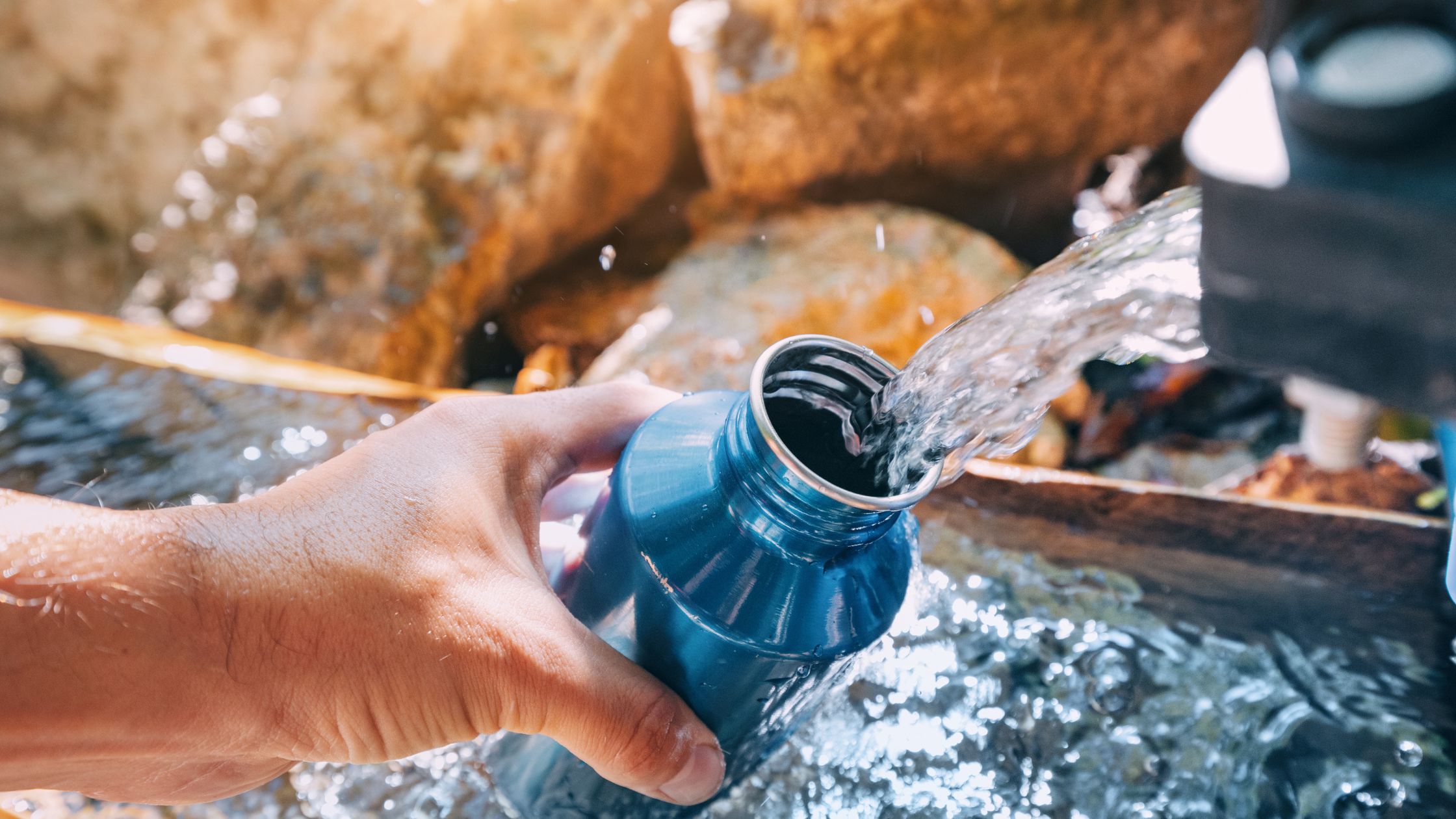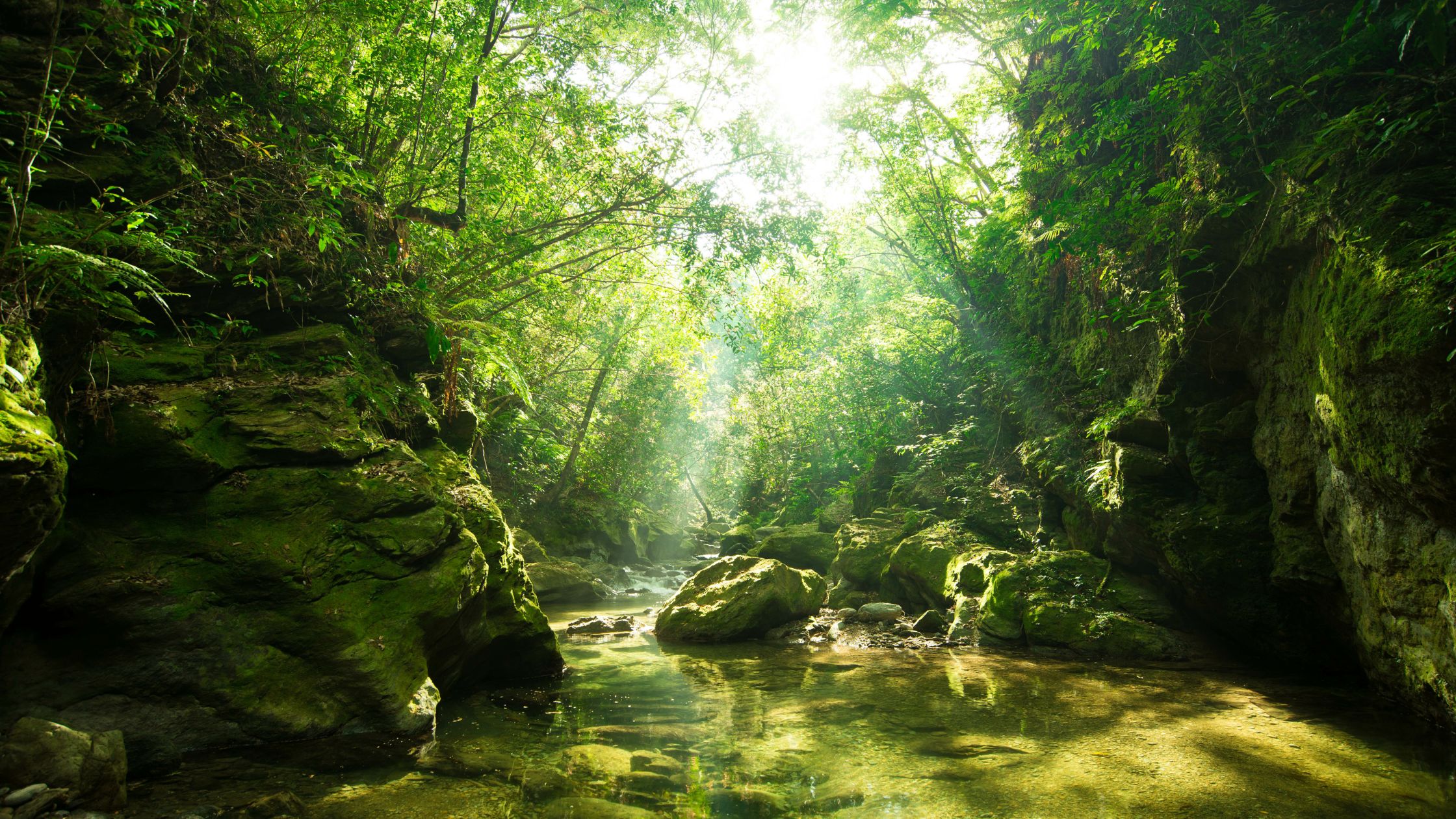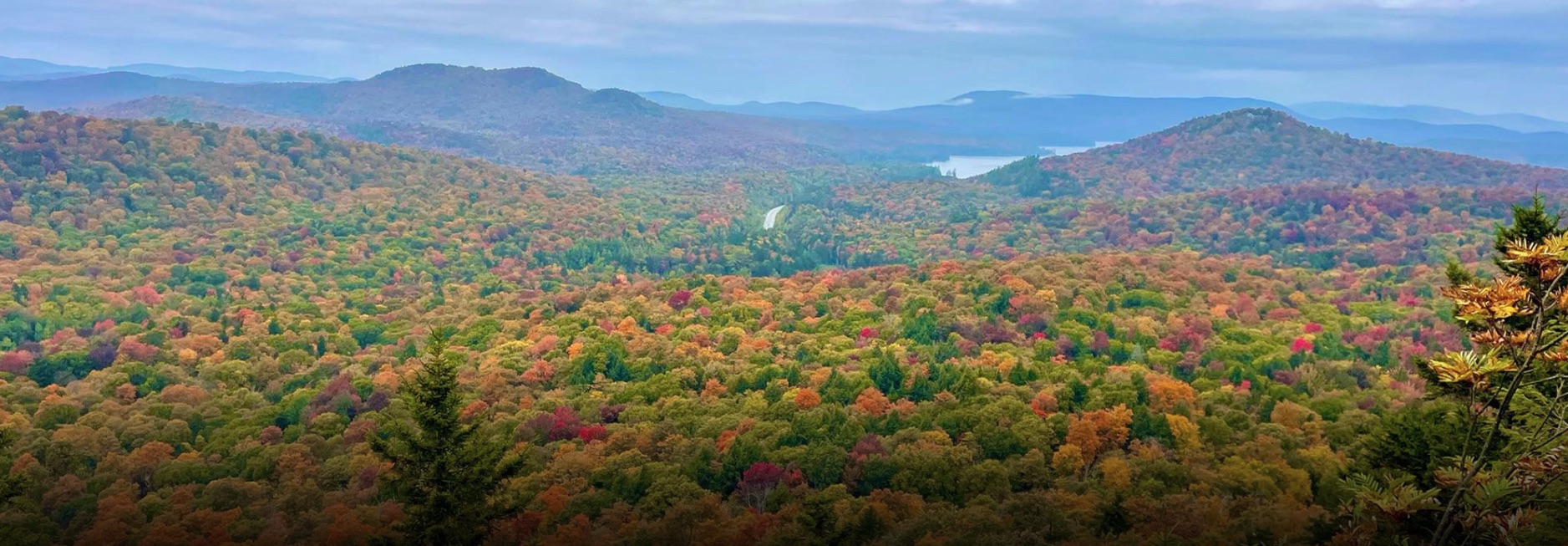If you find yourself lost in the wilderness, finding a reliable source of safe drinking water should be your first priority. Without clean water, dehydration and sickness will set in, and death becomes a real possibility. This guide provides essential tips and methods to help you ensure the water you find is safe to drink.
Find a Source of Hydration
The ideal water source is clean water you brought with you, but in the event you run out, you should look for clear running water as it is less likely to be contaminated than stagnant water. Try collecting rainwater in clean containers or the morning dew on a tarp. Ice, snow, and springwater are also other good alternatives.
In a pinch, there are a few alternatives to water. Fruits, vegetables, coconut water, the clear saps of the maple and birch trees, and the waters from cactus and bamboo plants can hydrate you.
Filtration
Once you have selected your water source, use a cloth or clothing to filter out large debris and sediment from the water. If you have a filtration unit on hand or a water purifier like a LifeStraw, this will speed up the water treatment process. If you do not have one, you can create a makeshift filter with layers of sand, gravel, and charcoal to remove larger particles and impurities.
Boiling
Lighting a fire and boiling your water is essential so microorganisms like bacteria and parasites are killed off. Boil water for at least three minutes, and even longer at higher altitudes, so your water is safe for consumption. To maximize your efficiency, try to put a lid on the container you are boiling the water in, as this will prevent steam from escaping and catch condensation.
Alternative Forms of Purification

Solar disinfection is one way to purify small amounts of water. To use this method, place clear plastic or glass containers of water in direct sunlight for six or more hours to disinfect it. Microorganisms are killed as the sun warms the water and purifies it with ultraviolet rays. If it is a cloudy day, leave the water out longer.
Purification tablets are another way to make water safe to consume. Using iodine or chlorine tablets will kill any microorganisms in the water. Ensure that the tablets are only used as directed on the label; do not put more than necessary in the water you are purifying.
Storing Purified Water
Once you have purified your water, try to use as much as you need to without limiting future rations. Storing water is more difficult than it seems, as water must be put in a sealed container, or it will begin to become more acidic and risk contamination from dust, insects, and other unpleasant pollutants. Keep a good amount of water stored for consumption, and keep it far from any animals or dirty surfaces.
Factors Affecting Water Quality

Even water that looks relatively clean may be risky to drink. If you are carrying a pH testing kit, you can figure out if the water is too acidic or basic to drink, or if it is suitable for consumption. A suitable pH level for drinking water is between 6.5 and 8.5. Boiling water will distill it and make it less basic, though it will become more acidic the longer it sits after distillation.
Also aim to avoid saltwater or water contaminated by human or animal waste or water containing animals, dead or alive. Any of the above contaminants increases the risk of disease, and saltwater will dehydrate you.
After You Drink
After you have some water, monitor yourself and anyone you share water with for symptoms of waterborne diseases. Symptoms include diarrhea and vomiting. Try to get help if you can, and consider carrying medicine in your emergency pack when you go into the wilderness.
If you are lost, minimize physical activity to conserve water. Sweating will quickly dehydrate you. Alcohol and caffeine are also not to be consumed, as they contribute to dehydration. Any activity you do partake in should be focused on ensuring your survival and rescue.
Concluding Thoughts on Securing Safe Hydration in the Wild
In conclusion, the abundance of water in the wild presents a deceptive challenge, as much of it is not fit for direct consumption. However, one can ensure a reliable and safe means of quenching thirst by adhering to the outlined steps of purifying, properly storing, and judiciously sourcing water. This approach guarantees hydration and emphasizes the importance of resourcefulness and precaution in natural environments. Thus, with careful consideration and application of these methods, one can confidently navigate the wilderness without compromising their health or hydration needs.






